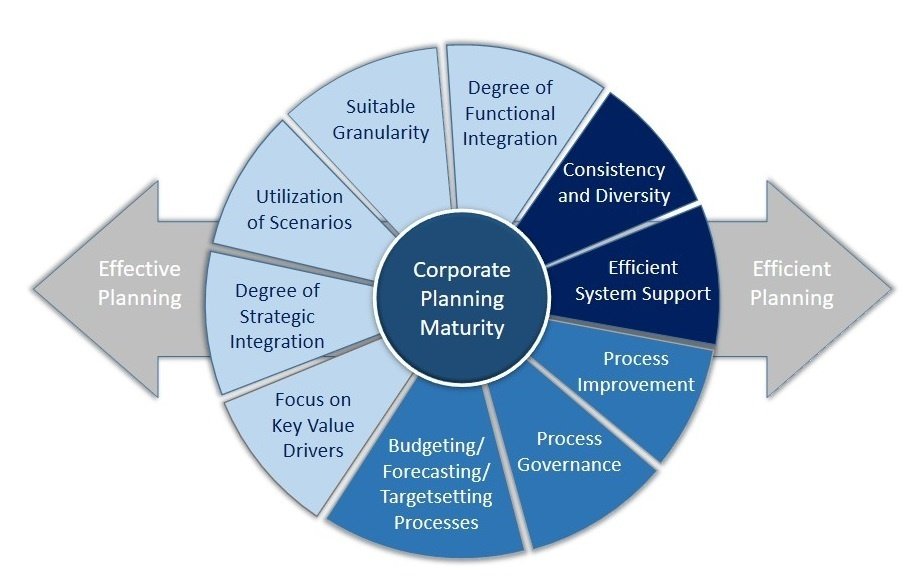Way more than in operational processes, corporate planning is very hard to evaluate. What tells you that your planning is “good”? What does “good” even mean? And is that worth the money your company spends on it? A new study in cooperation with a German university provides answers.
Cycle times, processing costs, scrap rates: In operational processes we have plenty of ways to measure a business process and to judge its efficiency. These measures, if performed repeatedly, are the basis for improvement and optimization.
Administrative processes like corporate planning are much harder to evaluate. How can the quality of planning be measured? How much does budgeting cost? And what value does it produce? Could this value be produced with less effort? As it is so difficult to measure planning, this is often simply not done at all. But without measures it is extremely difficult to systematically improve and optimize.
So how can this challenge be approached? Evaluating planning processes should always start with a clear perception on the goals of planning. Why do we plan? Why do we run a Budget cycle or a monthly Forecast?
1. Be clear on the goals of planning
It is important not to talk politics here. What is planning actually used for in your company, not in theory? Planning can have different reasons:
- You want to generate the numbers that will later be used as a baseline for deviation reports.
- You need to plan to generate the numbers that will be provided to external stakeholders.
- Planning might be used to define targets for individuals and/or organizational units.
- Planning in itself influences what employees put their focus on. So the requirement to plan has a behavioral control effect. Putting focus on Cash Flows in planning will make people aware that this is obviously of special interest in daily business.
Do you follow all these goals? If not: Why not? Don’t shoot to quick, but think about any ‘No’ at this stage.
2. Be clear on your processes
You cannot measure processes which you are not aware of. How many people are really involved in planning? Where do these numbers really come from? Capture the full “supply chain” of data, from their source to the final reports. Quite often this already is an impressive insight for central departments on how complex these processes are.
3. Critically check your planning processes against the defined goals
Any process step should contribute to at least one of the above-mentioned goals. If it does not, it needs to be questioned. All data being input should be directly used for one of the goals. If not, it needs to be questioned if the right things are planned or if planning is done too detailed. Different traps are waiting for process owners in planning.
The Corporate Planning Maturity Model:

Stampa Partners has developed a methodology to systematically assess and evaluate planning processes. Corporate planning is analyzed from ten different dimensions. On each dimension, different maturity levels can be distinguished that indicate how elaborate planning is performed. This methodology enables us to gain a detailed insight into our clients’ planning structures and processes and to ask the right questions from the start.
4. An interesting option: Participate in Benchmark 2017
The University of Applied Sciences in Rosenheim, Germany, is about to start an international benchmarking study called Benchmark 2017. This study applies the Corporate Planning Maturity Model in a detailed and structured online survey. Participants can get an objective evaluation of their planning processes based on that framework. Survey results are analyzed and compared to benchmark companies. Every participating organization will receive an individualized summary of its results as well as an evaluation of its planning maturity. A working paper on the digitalization of planning processes will give valuable insights into improvement potentials. It points to concrete options on how to re-engineer traditional structures and how to transform these into effective and efficient processes.
Participation in Benchmark 2017 is open for companies of all industries and sizes. Organizations can benefit independent of their current professionalism in planning and independent of the software tools that are currently used. All data are handled confidentially within the supervisory university. Individual results are anonymized before they flow into the overall benchmark.
More information and regristration: www.benchmark2017.com
By Andreas Krüger